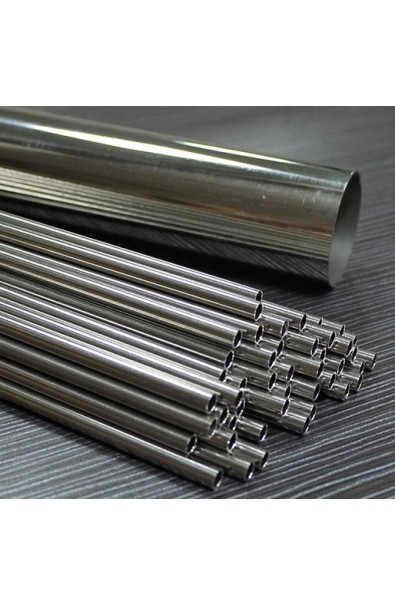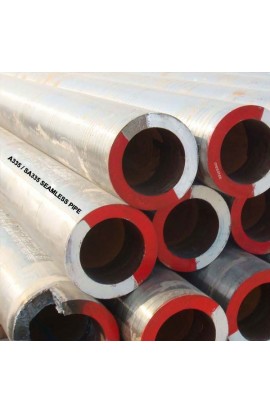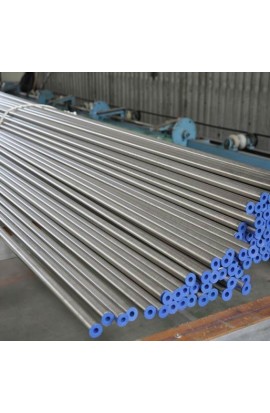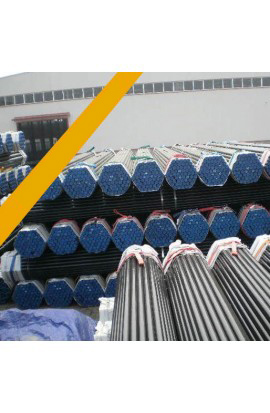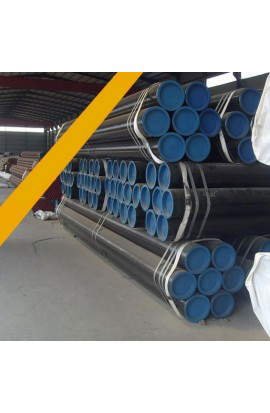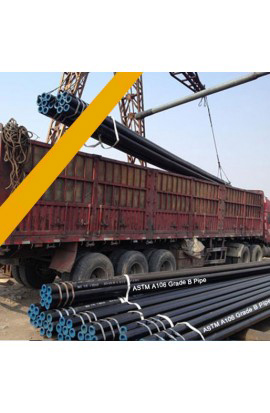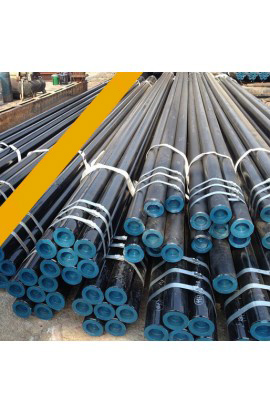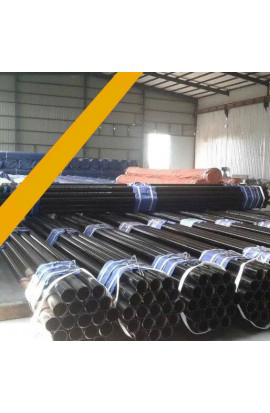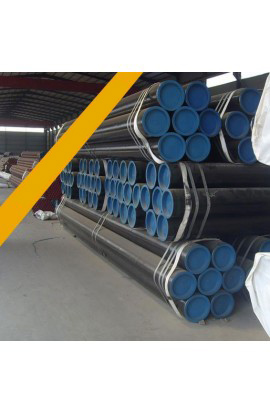No products
Product successfully added to your shopping cart
There are 2 items in your cart. There is 1 item in your cart.
Alloy Steel Pipes & Tubes
-
Carbon Steel Pipes & Tubes
- ASTM A106 SA106 Pipe
- ASTM A53 SA53 Pipe
- ASTM A135 SA135 Pipe
- ASTM A139 SA139 Pipe
- ASTM A179 SA179 Tubes
- ASTM A210 SA210 Tubes
- ASTM A333 SA333 Pipe
- ASTM A334 SA334 Pipe
- ASTM A500 SA500 Pipe
- ASTM A501 SA501 Pipe
- ASTM A512 SA512 Tube
- ASTM A513 SA513 Tube
- ASTM A517 SA517 Tube
- ASTM A519 SA519 Tube
- ASTM A671 SA671 Pipe
- ASTM A672 SA672 Pipe
- ASTM A252 Steel piling pipe
- Carbon Steel Seamless Pipe
- Carbon Steel Pipe Japan
- Carbon Steel Pipes Europe
- Carbon Steel Pipe China
-
Stainless Steel Pipes & Tubes
- Stainless Steel Tube, Tubing & Pipe
- ASTM A271 ASME SA271 Pipes/ Tubes
- ASTM A312 ASME SA312 Pipes/ Tubes
- ASTM A358 ASME SA358 Pipes/ Tubes
- ASTM A376 ASME SA376 Pipes/ Tubes
- ASTM A409 ASME SA409 Pipes/ Tubes
- ASTM A430 ASME SA430 Pipes/ Tubes
- ASTM A632 ASME SA632 Pipes/ Tubes
- ASTM A778 ASME SA778 Pipes/ Tubes
- ASTM A813 ASME SA813 Pipes/ Tubes
- ASTM A814 ASME SA814 Pipes/ Tubes
- ASTM A826 ASME SA826 Pipes/ Tubes
- ASTM A851 ASME SA851 Pipes/ Tubes
- ASTM A213 ASME SA213 Pipes/ Tubes
- ASTM A249 ASME SA249 Pipes/ Tubes
- ASTM A268 ASME SA268 Pipes/ Tubes
- ASTM A269 ASME SA269 Pipes/ Tubes
- ASTM A270 ASME SA270 Pipes/ Tubes
- ASTM A511 ASME SA511 Pipes/ Tubes
- ASTM A688 ASME SA688 Pipes/ Tubes
-
Alloy Steel Pipes & Tubes
-
Alloy Steel Tubes
- ASTM A213 T1 Alloy Steel Tube
- ASTM A213 T2 Alloy Steel Tube
- ASTM A213 T5 Alloy Steel Tube
- ASTM A213 T5b Alloy Steel Tube
- ASTM A213 T5c Alloy Steel Tube
- ASTM A213 T9 Alloy Steel Tube
- ASTM A213 T11 Alloy Steel Tube manufacturer and suppliers
- ASTM A213 T12 Alloy Steel Tube
- ASTM A213 T17 Alloy Steel Tube
- ASTM A213 T21 Alloy Steel Tube
- ASTM A213 T22 Alloy Steel Tube
- ASTM A213 T23 Alloy Steel Tube
- ASTM A213 T24 Alloy Steel Tube
- ASTM A213 T36 Alloy Steel Tube
- ASTM A213 T91 Alloy Steel Tube
- ASTM A213 T92 Alloy Steel Tube
- ASTM A213 T122 Alloy Steel Tube
- ASTM A213 T911 Alloy Steel Tube
- ASTM A513 Grade 8620 Alloy Steel Tube
- ASTM A513 Grade 4130 Alloy Steel Tube
- ASTM A513 Grade 4118 Alloy Steel Tube
- ASTM A513 Grade 4140 Alloy Steel Tube
- ASTM A513 Grade 8630 Alloy Steel Tube
-
Alloy Steel Pipes
- ASTM A335 P1 Alloy Steel Pipe
- ASTM A335 P2 Alloy Steel Pipe
- ASTM A335 P5 Alloy Steel Pipe
- ASTM A335 P5b Alloy Steel Pipe
- ASTM A335 P5c Alloy Steel Pipe
- ASTM A335 P9 Alloy Steel Pipe
- ASTM A335 P11 Alloy Steel Pipe Manufacturer & Suppliers
- ASTM A335 P12 Alloy Steel Pipe
- ASTM A335 P15 Alloy Steel Pipe
- ASTM A335 P21 Alloy Steel Pipe
- ASTM A335 P22 Alloy Steel Pipe Manufacturer and suppliers
- ASTM A335 P23 Alloy Steel Pipe
- ASTM A335 P24 Alloy Steel Pipe
- ASTM A335 P36 Alloy Steel Pipe
- ASTM A335 P91 Alloy Steel Pipe
- ASTM A335 P92 Alloy Steel Pipe
- ASTM A335 P122 Alloy Steel Pipe
- ASTM A335 P911 Alloy Steel Pipe
- Alloy Steel Pipe & Tube Specification
-
Alloy Steel Tubes
- Special Steel Grades Pipes & Tubes
- API 5L Pipe
- Titanium Pipes & Tubes
- Welded/ ERW Pipes
- Mild Steel Pipes & Tubes
- Ductile Iron Spun Pipe & Ductile Iron Flanged Pipe Cast
- Capillary Tube| Capillary Tubing
- Boiler Tube
- Heat exchanger tubes
- Cupro Nickel Tube
- Aluminium Tube
- Corten Steel Pipes & Tubes
- EIL Approved Pipes
- IBR Pipe/ Tube & Non IBR Pipe/ Tube
- Black Pipes
- Galvanised Steel Pipes/ GI Tubes
- SS Coiled Tubing/ Tubes
- SS Electropolished Pipes/ Tubes
- SS Rectangular Pipes/ Tubes
- SS Square Pipes/ Tubes
- Full comparison of the DIN and EN standards for pipes/tubes
- Stainless Steel Pipe grades comparison



Surplus stock of Steel Pipes & Tubes:
Specialist in:
Offering best price on:
Widest inventory of:
SS,CS,Alloy Steel Pipe Prices
- » Steel Pipe/ Tube Price Iran
- » Steel Pipe/ Tube Price USA
- » Steel Pipe/ Tube Price India
- » Steel Pipe/ Tube Price China
- » Steel Pipe/ Tube Price Indonesia
- » Steel Pipe/ Tube Price UK
- » Steel Pipe/ Tube Price UAE
- » Steel Pipe/ Tube Price Malaysia
- » Steel Pipe/ Tube Price Singapore
- » Steel Pipe/ Tube Price South Korea
- » Steel Pipe/ Tube Price Saudi Arabia
- » Steel Pipe/ Tube Price Japan
- » Steel Pipe/ Tube Price Thailand
- » Steel Pipe/ Tube Price Bangladesh
- » Steel Pipe/ Tube Price Canada
- » Steel Pipe/ Tube Price Germany
- » Steel Pipe/ Tube Price Australia
- » Steel Pipe/ Tube Price Nigeria
- » Steel Pipe/ Tube Price Iraq
- » Steel Pipe/ Tube Price Turkey
- » Steel Pipe/ Tube Price Brazil
- » Steel Pipe/ Tube Price Vietnam
- » Steel Pipe/ Tube Price South Africa
- » Steel Pipe/ Tube Price Egypt
- » Steel Pipe/ Tube Price Bahrain
- » Steel Pipe/ Tube Price France
- » Steel Pipe/ Tube Price Mexico
- » Steel Pipe/ Tube Price Netherlands
- » Steel Pipe/ Tube Price Taiwan
- » Steel Pipe/ Tube Price Spain
- » Steel Pipe/ Tube Price Philippines
- » Steel Pipe/ Tube Price Pakistan
- » Steel Pipe/ Tube Price Kuwait
- » Steel Pipe/ Tube Price Norway
- » Steel Pipe/ Tube Price Oman
- » Steel Pipe/ Tube Price Qatar
- » Steel Pipe/ Tube Price Russia
- » Steel Pipe/ Tube Price Slovakia
- » Steel Pipe/ Tube Price Poland
ASTM A335 ASME SA335 p1 Alloy Steel Chromo moly pipe tube supplier
ASTM A335 / ASME SA335 Chrome Moly Alloy Pipe largest stock of Tenaris/Tubacex/Nippon-Sumitomo/Arcelor Mittal/JSL/MSL/MUKAT & China make P1 pipe at best price
New
More info
What is p1 pipe:
ASTM A335 / ASME SA335 Chrome Moly Alloy Pipe
ASME SA335 / ASTM A335, Chrome-Moly pipe is a seamless ferritic Alloy-Steel Pipe produced in nominal or minimum wall thickness for high temperature service. Pipe ordered to this specification shall be suitable for bending, flanging, similar forming operations and for fusion welding.
Chrome Moly products are named so due to the presence of the two elements Molybdenum (Mo) and Chromium (Cr). Cr raises the properties of tensile, yield and hardness (at room ambient temperatures) making it ideal for combatting oxidation in high temperature services. Mo is known, amongst other attributes, to improve the hardenability, reduce brittleness, strengthen the elastic limit, increase temperature strength and improve weldability in certain situations. Sometimes referred to as “P Grade” materials, chrome moly pipe comes in more than 17 grades with the most widely used P-Grades being P5, P9, P11, P22 and P9.
It is commonly known that A335 / SA335 material is extensively used in a variety of plants & processes across the globe including refineries, power plants, petro-chemical plants, hydrocrackers, cokers, high and super high temperature lines, reheat lines, distillation, oil field services, etc. In general, the most commonly used P grades in refineries are P5 & P9. The most commonly used P grades in the power generation industry and petro-chemical plants are P11, P22 & P91. A quick perusal, however, of what appears to be similarly designed facilities will result in findings that they do not necessarily use the same piping specifications. For example, there are many different designs and piping systems in what be generically called a “natural gas processing plant”.
Schedules - A335 / SA335:
STD, 40, XH, 60, 80, 100, 120, 140, 160, XXH
Specialty Pipe:
Wall thicknesses up to 4", intermediate, average and min walls
Description of Material - A335 / SA335:
Chrome moly, ferritic alloy, creep and heat resistant
Temprature & Allowable Strees of P1/P2/P5/P7/P9/P11/P12/P21 & P22 Pipe:
Seamless Ferritic Alloys Steel Pipes
Operating temperature and allowable stresses in pipe walls for seamless ferritic alloys steel pipes
- A-335 Grade P1, P2, P5, P7, P9, P11, P21, P12, and P22
- A-369 Grade FP1, FP2, FP3, FP5, FP7, FP9, FP11, FP12, FP21 and FP22
are indicated in the diagram below:
What is P1 Material?
| Model No.︰ | ASP p1-10 |
| Brand Name︰ | ASTM/ASME A335/SA335 P1,P2,P5,P9,P11,P22,P23,P91,P |
| Country of Origin︰ | -Tenaris-Italy, |
| P1 Pipe Price︰ | -USD 1700 per Ton |
| Minimum Order︰8 Ton |
| Product Description |
|
||||||||||||||||||||||||||||||||||||||||||||||||||||||||||||||||||||||||||||||||||||||||||||||||||||||||||||||||||||||||||||||||||||||||||||||||||||||||||||||||||||||||||||||||||||||||||||||||||||||||||||||||||||||||||||||||||||||||||||||||||||||||||||||||
Chrome-moly pipe has become a standard in industries such as power generation, chemical processing and petroleum refineries, not only because of its corrosion resistance and high-temperature strength, but also for its cost effectiveness. In many applications, it is a viable alternative to a more costly stainless steel pipe.
Choosing filler metals to weld chrome-moly pipe requires the same principle consideration as with any material: match the chemical and mechanical properties in a way that yields the strongest, safest and longest lasting welds. Specific low alloy SMAW electrodes. They provide the low carbon, low hydrogen properties that prevent welds from corroding and/or cracking on critical piping applications, as well as the necessary strength to withstand high pressure and temperatures.
the more common grades are P11, P21, P22, P91 and P92, some of which can withstand service temperatures over 600 degrees Celsius and have wall thicknesses ranging from 1/8 inch to eight inches. The amount of chrome, molybdenum or other alloying elements determines the assigned grade of chrome-moly. These particular grades contain a range of 1¼ to 9 percent chrome and ½ to 1 percent molybdenum, with those containing more chrome providing the most corrosion and temperature resistance.
When welding chrome-moly pipe, regardless of the grade and/or the filler metal being used, it is important to maintain specific preheat and interpass temperatures. Consistent temperatures help conserve strength and crack resistance under extreme service conditions. Recommended preheat temperatures range from 121 to 204 C according to the wall thickness,Recommended Practices for Welding of Chromium-Molybdenum Steel Piping and Tubing,’ preheating practices should always be observed, even before tack welding. It is especially important to preheat prior to repairing P21 and above grade chrome-moly pipe that has been in service,
Maintaining interpass temperatures is also important. A range of 177 to 316 C is typical, depending on the grade of chrome-moly and its thickness, but most importantly, upon the required welding procedure.
Post-weld heat treating (PWHT) or stress relieving is also recommended. PWHT requirements are generally 621 to 760 C for one hour. PWHT helps rid the weld of hydrogen that may have been picked up either from the filler metal, the base metal, or the atmosphere, and can help minimize the chances of cracking.
Low alloy SMAW electrodes are your best choice for chrome-moly pipe welding repairs, because they are easily portable. They can also reach into the small physical confines of existing chrome-moly piping systems.
For P11 Pipe welding:(1 ¼% Cr – ½% Mo) chrome-moly pipe, use either an AWS E8018-B2 H4R or E8018-B2L H4R SMAW electrode, as both are formulated for applications subject to high heat and/or humidity. They also resist hydrogen pick up that can lead to cracking or starting porosity. The E8018-B2L H4R stick electrode contains a lower amount of carbon, which further protects against cracking. Both electrodes work especially well on boiler and similar piping repairs that require weld tensile strengths above 80,000 psi. On the average they offer tensile strengths in the range of 90,000 to 98,000 psi.
P21 or P22 Pipe Welding:(2 ¼% Cr – 1% Mo) or P22 (3% Cr – 1% Mo) pipe requires SMAW electrodes with higher chrome content and higher tensile strengths than those used for P11 pipe. Options include AWS E8018-B3L, E9018-B3 H4R or E9018-B3L H4R electrodes, which are good for boiler work and general pipingapplications. These SMAW electrodes yield tensile strengths in the range of 105,000 to 110,000 psi and generally feature a special moisture resistance coating that protects against hydrogen pick up in service conditions of high humidity or heat.
Finally, when repairing P91 pipe (9% Cr – 1% Mo or P92 (9% Cr – 2%W – ½% Mo, V) pipe, choose a SMAW electrode formulated to improve creep resistance. Creep is any deformity (buckling, warping, etc) caused by stress and/or heat during the welding process, and higher strength chrome-moly is prone to this occurrence. AWS E8018-B8 H4R, E8018-B8L H4R or E9018-B9 SMAW electrodes can help provide that protection and are good choices for petrochemical or petroleum pipes or other surface applications exceeding service temperatures of 149 C. They yield tensile strengths between 100,000 and 110,000 psi.
Fabrication of p11 Pipe:
When fabricating P11 chrome-moly pipe, the following flux-cored wires can be used: AWS E80T1-B2C/M, E80T5-B2C/M, and E81T1-B2C/M, all of which offer excellent strength, and creep and corrosion resistance in high service temperature applications. They are comparable in their characteristics to an E8018-B2 SMAW electrode, but will yield different tensile strengths according to the shielding gas used. A ‘C’ at the end of the AWS classification indicates the wire requires 100% CO2, whereas a ‘M’ indicates the wire uses a 75 percent argon/25 percent CO2 mixture and provides higher tensile strengths.
The main low alloy flux-cored wires for welding P21 and P22 chrome-moly pipe include AWS E90T1-B3C/M and E90T5-B3C/M for flat and horizontal welding, and the E91T1-B3C/M H4 for all-position welding applications. The E91T1-B3C H4 requires 100 percent CO2 and the E91T1-B3M H4 uses 75 percent argon/25 percent CO2 shielding gas.
Typically, the best low alloy flux-cored wire for welding P91 and P92 chrome-moly is an AWS E91T1-B9. This type of wire offers a fast-freezing slag for out-of-position welding, along with low diffusible hydrogen levels to control cracking. It also has a very high tensile strength: approximately 126,000 psi. Not surprisingly, because P91 and P92 chrome-moly pipe are used for higher temperature services than the other grades, E91T1-B9 flux-cored wire creates X-Ray quality welds, which are essential on such critical piping applications.
The DMW can be deposited using either 9Cr-1Mo filler metal or 2.25 Cr-1Mo filler metal. No buttering is required because PWHT will be required for Grade 91 and P22. So, you need to carefully control the PWHT temperature to ensure adequate tempering for the Grade 91, and not overshoot the lower critical transformation temperature for the P22 material. I would suggest using a 1400-1425 deg F for PWHT. Monitoring of this PWHT is critical. This material is unlike other Cr-Mo materials.
Also, after welding the Grade 91 make sure you allow this weld to cool to below 200 deg F before PWHT. Use low hydrogen consumables.
Project: SUGAR Plant
Company: Saraswati Sugar Mills,Yamunanagar,Haryana
Situation:
The Asia's largest sugar mill in yamunanagar, Haryana in January 2010 which was peak season of production, the $850 million plant having the crushing capacity of 12,000 tons every day. Nearly 2,000 permanent and other 800 seasonal employee are depend upon the company came into the problem when their 2 big boilers collapsed suddenly & they were not having any other choice to replace boilers tubes immediately
Solution:
The Purchase manager was deputed to MD Exports LLP Pipes for a bid on six items, including chrome moly grade P22, chrome moly grade P11,P1 & P2 Pipe. With an original quote of $.5 million and a reputation for maintaining the closest mill relationships in the industry, MD Exports LLP pipes not only won the job even hearts of thousand associates with SSM.
Result:
MD Exports LLP Pipes worked hand in hand with the mills to reduce pricing, prompting the engineering company to continue to request more pipe. Because of these outstanding relationships, MD Exports LLP Pipes was able to deliver within 3 days at factory.
- The preheat temperatures provided are when low hydrogen electrodes are used. Consider all the TiP TiG, MIG and gas shielded flux cored electrodes as low hydrogen consumables.
- Preheat also applies to minimum inter-pass temperatures.
- Post heat increases toughness and reduces residual stresses.
- For critical pipe applications always adhere to to code and material specifications and weld requirements. Double check the electrode recommendations.
- 1000 psi = ksi x 6.894 = MPa.
ALLOY STEEL SEAMLESS PIPE IS BEST FOR:
Alloy Steel Seamless Pipes (AS) are used for high temperature and pressures applications and are used typically in critical applications. Some of the Standards & Specifications that Alloy Pipes confirm to are American Standards like ASTM A335 P1, P5, P9, and P11 & P22. Alloy Steel Seamless Pipes (AS) is commonly used by Oil & Gas, Hydrocarbon & Process industries. Alloy Steel Seamless Pipes (AS) can also be supplied with Indian Boiler Regulations Certifications (IBR).
ADDITIONAL SERVICES WITH P1/P5/P9/P11/P12/P22/ P91/P92 PIPE PURCHASE:
We are also able to cater to client’s special requirements for:
- Sand Blasting
- External Coatings like 3LPE / 3LPP/ FBE/ DFBE/ PP strictly in adherence to its respective standards
- Specific Fixed lengths for quantity items
- Any other supplementary services as per the code
However, above mentioned few additional services are subject to order size, quantity and availability of spare capacities.
- Grades: ASTM A 335, Gr P1, P5, P9, P12, P22, P91, ASTM A 213, T-11, T-5, T-22, T-9, T12, ASTM / ASME A 691 GR 1 CR, 1 1/4 CR, 2 1/4 CR, 5 CR, 9 CR, 91 WITH NACE MR 0175
- Sizes available: 1/2" - 26" (seamless) and 8" to 48" (welded)
- Wall thickness: 20, 30, 40 standard (STD), extra heavy (XH), 80, 100, 120, 140, 160, XXH
- Testing: MR 0103, NACE MR0175, NACE TM 0284, ISO:3183, HIC, SOURCE SERVICE, SSC tested, impact test at 50 degree Celsius, radiography
- Certificate: EN 102043.1 & EN 10204 3.2
- ------------------------------
------------------------------ ----------- - ALLOYS STEEL SEAMLESS PIPE CAN BE DELIVERED AS:
- Annealed
- Rolled
- Normalized
- Quenched & tempered
- Stress relived
Major failures have occurred in piping due to single-phase or wet-steam erosion-corrosion, resulting extensive plant downtime. Both nuclear and fossil power plants as well as petrochemical plants are susceptible to erosion-corrosion. Causes, possible corrective actions, where to look in susceptible systems, optimum nondestructive examinations and analytic techniques to predict remaining life are covered.
Significant variables include temperature of water or steam, pH, oxygen content of fluid, quality of steam, flow velocity, quality of oxide layer on inner surface of the pipe, and chemical composition of the steel pipe. Typical susceptible systems are feedwater and let-down lines in water and elbows, tees, etc., in wet steam. Other systems operating under comparable conditions also are susceptible to attack.
Factors mitigating erosion-corrosion which are under the control of the plant owner are the pH(>9.0 is best), oxygen content (50ppb), and pipe material (a 2.25Cr-1Mo steel is very resistant to single-phase erosion-corrosion while austenitics are resistant to wet steam).
Austenitic steels also have excellent resistance to erosion-corrosion. Low carbon grades are preferable because of better intergranular stress corrosion cracking (IGSCC) resistance. The candidate materials are 304L, 316L, and 347L. These materials are readily available and do not require preheat or postweld heat treatment. The disadvantages of austenitic stainless steels are that piping reanalysis is required due to a higher thermal coefficient (1.4 x carbon steel); the bimetallic welds need special attention; and susceptibility to chloride stress corrosion raises concern over the chloride contaminants in thermal insulation.
Class 3 systems usually are low temperature and pressure, often using austenitic stainless steel. The probability of attack by erosion-corrosion is minimal.
Class 2 systems, particularly the feedwater, definitely are susceptible; however, replacement with Pll or P22 materials (1 Cr-0.5/Mo or 2.25 Cr-l Mo) grossly reduces the rate of attack at low oxygen levels typical of these systems. If the pH can be raised to 9.5, the rate is reduced a factor of 100-1000 compared to pH -9.0. Obviously, carbon steel systems operating at about 200°C at velocities >18ft/sec with lower pH beca
P1 Pipe FOB Price: Best price/Dealer Price:
A335 P1 High Pressure Steel Pipe Price (JFE-Japan) :USD 1700 per Ton(FOB Price)
A335 P1 High Pressure Steel Pipe Price (Tenaris-Italy) :USD 1900 per Ton(FOB Price)
A335 P1 High Pressure Steel Pipe Price (Arcelor Mittal) :USD 2000 per Ton(FOB Price)
A335 P1 High Pressure Steel Pipe Price (JSL-INDIA) :USD 1450 per Ton(FOB Price)
A335 P1 High Pressure Steel Pipe Price (MSL-INDIA) :USD 1500 per Ton(FOB Price)
A335 P1 High Pressure Steel Pipe Price (Mukat-INDIA) :USD 1350 per Ton(FOB Price)
A335 P1 High Pressure Steel Pipe Price (Welspun-INDIA) :USD 1450 per Ton(FOB Price)
A335 P1 High Pressure Steel Pipe Price (V&M-france) :USD 2100 per Ton(FOB Price)
A335 P1 High Pressure Steel Pipe Price (Nippon Sumitomo-Japan) :USD 1900 per Ton(FOB Price)
A335 P1 High Pressure Steel Pipe Price (China Make) :USD 850 per Ton(FOB Price)
Reviews
No customer comments for the moment.
Summary
- Product Name:ASTM A335 ASME SA335 p1 Alloy Steel Chromo moly pipe tube supplier
- Price: $ 1.75
- Product Width: 0.00 cm
- Product Height: 0.00 cm
- Product Depth: 0.00 cm
- Product Weight: 0.00 kg
- Description: ASTM A335 / ASME SA335 Chrome Moly Alloy Pipe largest stock of Tenaris/Tubacex/Nippon-Sumitomo/Arcelor Mittal/JSL/MSL/MUKAT & China make P1 pipe at best price




